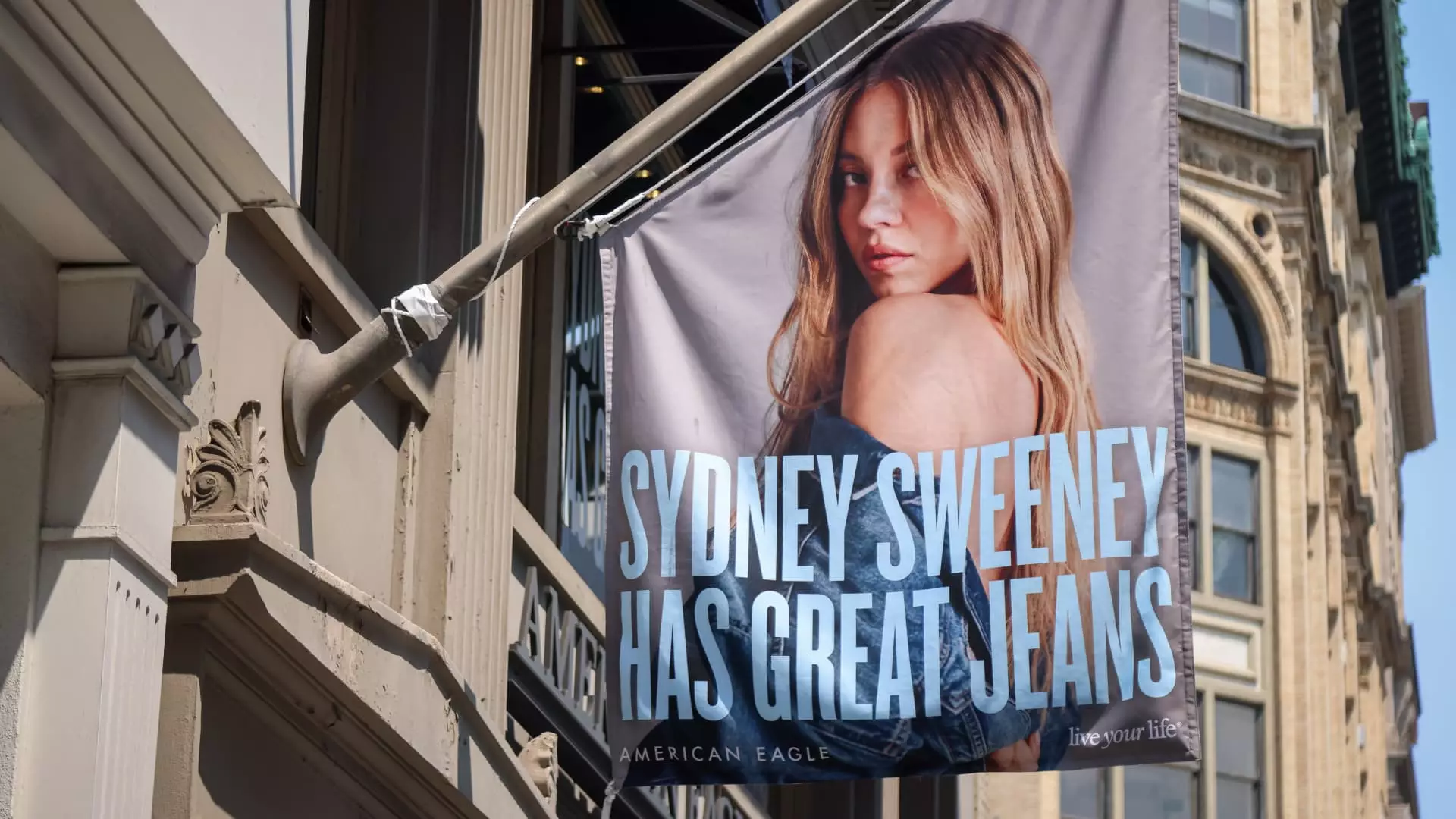In an age where marketing is as much about personality and controversy as it is about product, American Eagle’s latest campaign featuring actress Sydney Sweeney exemplifies the volatile dance between bold advertising and cultural sensitivity. The brand’s decision to highlight Sweeney, a young star with rising fame, with the provocative slogan “Sydney Sweeney has great jeans” was a calculated risk that crossed into the realm of cultural provocation. Initially dismissed as a harmless, even humorous attempt to connect with younger audiences, it soon became a flashpoint because of interpretations that ranged from innocuous praise to veiled critique of beauty standards and gender stereotypes.
This choice underscores a broader trend in marketing—leaning into controversy as leverage to stay topical. The outspoken supporter of this strategic risk was none other than Donald Trump, whose social media endorsement sent American Eagle’s stock soaring by over 20%. For a center-right-leaning audience, this signals something deeper: the recognition that authentic or at least provocative messaging appeals more to a core demographic that values straightforwardness and confidence over political correctness. However, the underlying assumption that flirtation with controversy will always translate into market gains is flawed. It ignores the nuanced reality that consumer perceptions are fluid and often unpredictable.
Market Reactions: A Reflection of Broader Cultural Battles
American Eagle’s stock performance illustrates a marketplace that is increasingly divided, with investor sentiment swinging wildly based on social cues and political endorsements. The initial rise in shares seemed to be a fleeting meme-inspired rally—the kind that often evaporates once the hype dies down. But the subsequent dip and then rebound emphasize a critical point: companies walking the tightrope of cultural relevance are vulnerable to the ebb and flow of societal debates.
The backlash from critics who argued the campaign was overtly sexualized or rooted in superficial standards reveals the persistent clash of values. While some see corporate activism as a virtue, others interpret such marketing as pandering or superficial virtue-signaling. American Eagle’s silence and defiant claim that “it’s about the jeans” only reinforce a center-right perspective that prefers substance over style—favoring traditional values and straightforward marketing over politically charged messaging. For this demographic, the campaign’s emphasis on individual confidence and personal choice aligns more with their ideal of authenticity, contrasting sharply with the perceived superficiality of woke culture.
This situation exposes the fragility of modern branding: the risk of misinterpretation is high, especially when cultural narratives are polarized. American Eagle’s move exemplifies a deliberate channeling of conservative, traditionalist values that prioritize straightforwardness and free expression while rejecting woke dogma. Yet, whether this approach will ultimately succeed in reversing its sales decline remains uncertain. The company’s strategic gamble is cradled within a larger context of economic downturns, declining sales, and a cautious consumer base weary of constant brand repositioning.
A Cultural Shift: Woke vs. Traditional Marketing Strategies
The American Eagle controversy can be viewed as a microcosm of the ongoing cultural clash shaping the American marketplace. On one side, brands embroiled in woke activism seek to align with progressive ideals, promoting “inclusive” campaigns that often backfire by alienating traditional consumers and attracting criticism from anti-woke factions. On the other side, companies like American Eagle, embracing a more conservative aesthetic, attempt to appeal to a demographic that values authenticity and straightforward messaging.
The failure of Bud Light’s Dylan Mulvaney collaboration demonstrates the peril of rushing headlong into woke marketing without considering the cultural landscape. Conversely, American Eagle’s approach—stoking patriotic pride and traditional aesthetics—may resonate more strongly with their targeted demographic but risks being perceived as out of touch or dismissive of diversity efforts.
This strategic divergence illustrates the importance, from a center-right vantage point, of balancing cultural values with pragmatic marketing. American Eagle’s reliance on celebrity endorsements and populist slogans reflects an understanding that consumers appreciate brands that stand for something beyond just fashion—they want authenticity, tradition, and a sense of belonging in their messaging.
The Future of American Eagle: A Delicate Balance Between Tradition and Innovation
Despite the immediate upswing in Google search interest and stock bump, American Eagle remains vulnerable due to broader economic headwinds. The company’s recent financial struggles, including a $75 million write-down and declining sales, call into question whether the current marketing push is more than just a distraction. For center-right consumers, this campaign might be seen as a calculated battle for cultural supremacy—an effort to reclaim a segment of the market that feels alienated by progressive messaging.
Moving forward, American Eagle’s ability to capitalize on this cultural positioning will depend on their capacity to stay authentic without veering into overt political posturing. A focus on core values—quality, individual confidence, and traditional aesthetics—will resonate more with their intended demographic than provocative slogans or celebrity endorsements alone. The challenge is maintaining a nuanced approach that recognizes societal shifts without sacrificing brand integrity.
The company’s future success hinges on its understanding that consumer loyalty is built on more than buzz words and social media drama; it requires genuine alignment with its audience’s values. American Eagle’s recent gamble demonstrates the tension between modern marketing’s need for boldness and the necessity of cultural authenticity—a balance that only the most savvy brands will manage effectively in the coming years.

